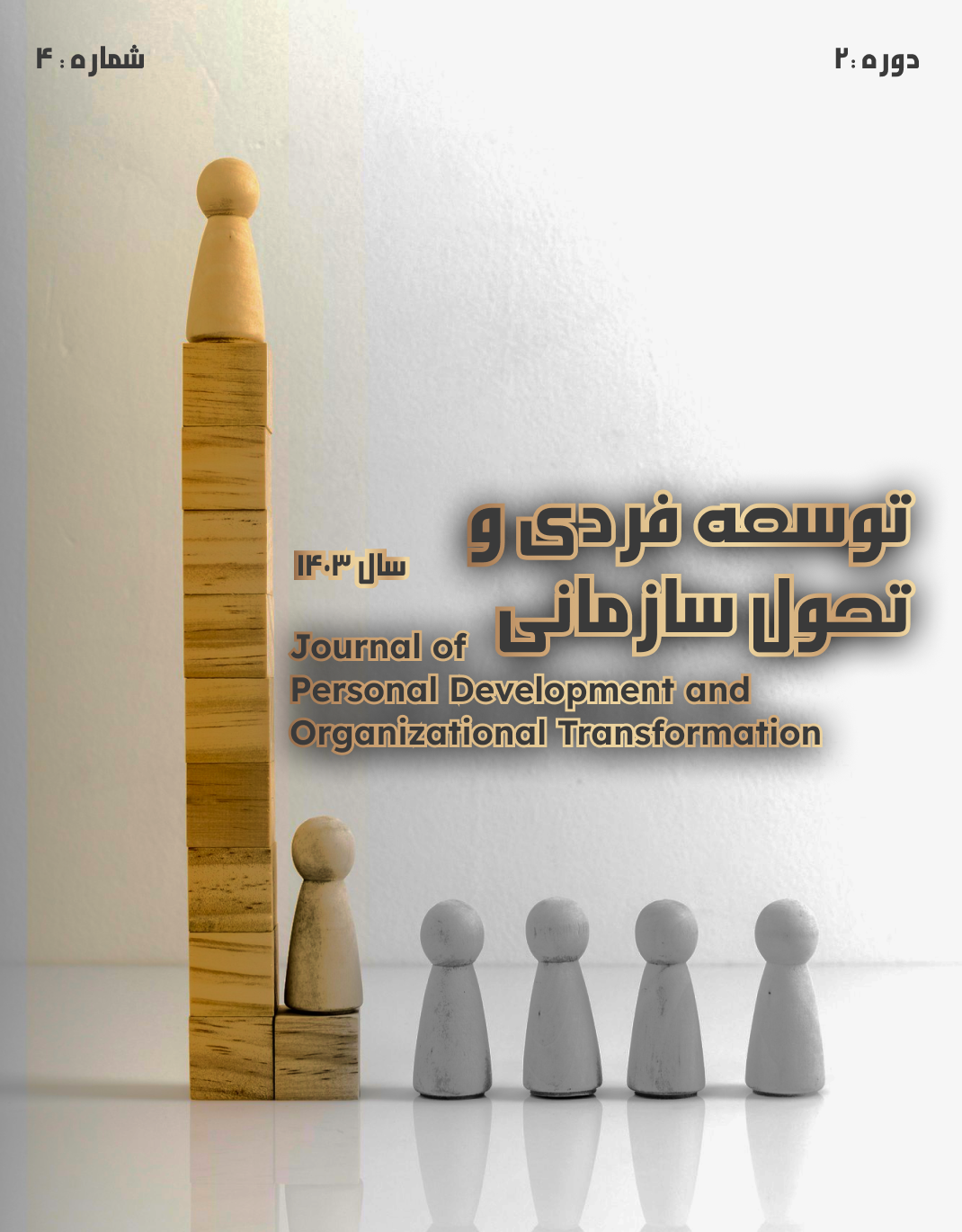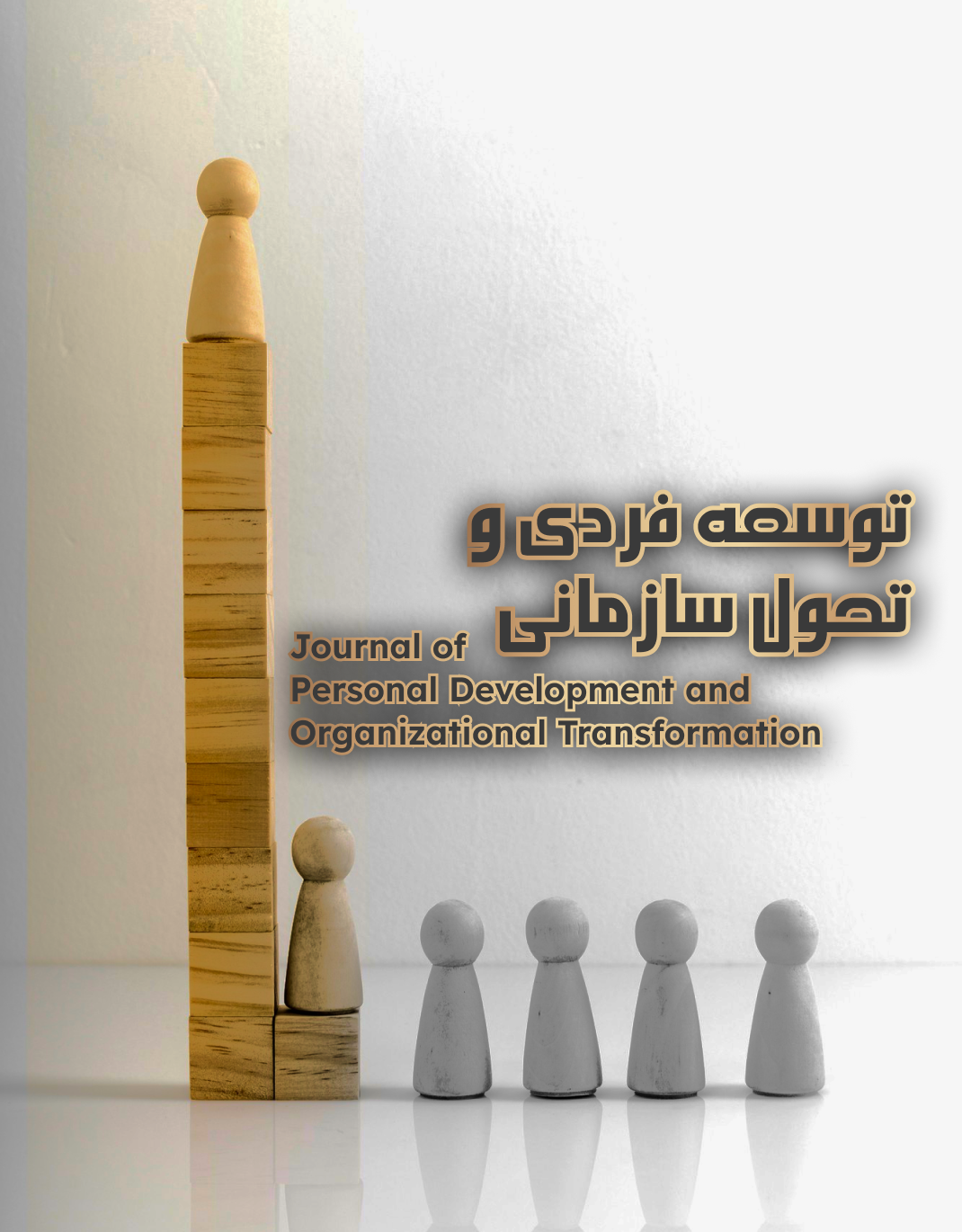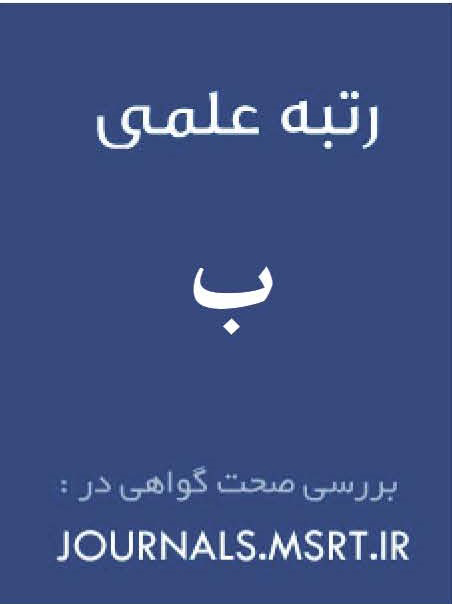تحول آموزشی از طریق فناوری های نوظهور: ظرفیت ها و چالش های آن در آموزش
کلمات کلیدی:
آموزش و پرورش و تکنولوژی, فناوری های نوظهور و یادگیری, چالش های فناوری های نوظهور در آموزشچکیده
تحول آموزشی به طور فزایندهای تحت تأثیر فناوریهای نوظهور است که فرصتهای منحصر به فردی را برای بازتعریف یادگیری ارائه میدهد. هدف این مطالعه تحلیل انتقادی تولیدات علمی مرتبط با استفاده از فناوریهای نوظهور در حوزه آموزشی، با تمرکز بر تأثیر آنها بر فرآیند یاددهی-یادگیری است. یک بررسی سیستماتیک از ادبیات علمی انجام شد و در مجموع 58 مقاله از سال 2023 تا 2025 مورد تجزیه و تحلیل قرار گرفت. نتایج نشان میدهد که اگرچه علاقه فزایندهای به ادغام فناوریهایی مانند هوش مصنوعی و واقعیت افزوده وجود دارد، نگرانیهایی نیز در مورد پیادهسازی و اثربخشی آنها ظاهر میشود. علاوه بر این، روندهای تحقیقاتی شناسایی شدهاند که رویکردی چند بعدی را برای استفاده از این فناوریها پیشنهاد میکنند و اهمیت آموزش معلمان و زمینه آموزشی که در آن به کار میروند را برجسته میکنند. نتایج نشان میدهد که برای به حداکثر رساندن تأثیر مثبت این فناوریها، یک رویکرد آموزشی آگاهانه که مزایا و چالشهای آنها را در نظر میگیرد ضروری است. این تجزیه و تحلیل پایهای برای مطالعات آینده و راهنمایی برای مربیان و سیاست گذاران در ترکیب موثر فناوریهای نوظهور در محیط آموزشی فراهم میکند.
دانلودها
مراجع
Abriata, L. A. (2022). How technologies assisted science learning at home during the COVID-19 pandemic. DNA Cell Biol, 41, 19-24. https://doi.org/10.1089/dna.2021.0497
Acosta-Vargas, P., Acosta-Vargas, G., Salvador-Acosta, B., & Jadán-Guerrero, J. (2024). Addressing web accessibility challenges with generative artificial intelligence tools for inclusive education. https://doi.org/10.1109/ICEDEG61611.2024.10702085
Alan, Ü. (2023). We've all traveled, we've all learnt: virtual field trips in early childhood education. Anadolu Üniv. Egitim Fak. Derg, 7, 883-905. https://doi.org/10.34056/aujef.1346279
Berrones-Yaulema, L. P. B., & Buenaño-Barreno, P. N. B. (2023). ChatGPT en el ámbito educativo. Esprint Investig, 2, 45-54. https://doi.org/10.61347/ei.v2i2.57
Camilleri, M. A., & Camilleri, A. C. (2022). The acceptance of learning management systems and video conferencing technologies: Lessons learned from COVID-19. Technol. Knowl. Learn, 27, 1311-1333. https://doi.org/10.1007/s10758-021-09561-y
Canright, J. P., & White Brahmia, S. (2024). Modeling novel physics in virtual reality labs: An affective analysis of student learning. Phys. Rev. Phys. Educ. Res, 20, 10146. https://doi.org/10.1103/PhysRevPhysEducRes.20.010146
Chen, Z., & Singh, C. (2025). Opportunities and Challenges in Harnessing Digital Technology for Effective Teaching and Learning. Trends in Higher Education, 4(1), 6. https://doi.org/10.3390/higheredu4010006
Chi-Hang Tsoi, J., & Strønen, F. (2024). Integration of conversational AI capabilities in knowledge management processes for higher education. https://doi.org/10.34190/eckm.25.1.2659
Desideri, L., Mavrou, K., Brunetti, E., Di Fuccio, R., Pagliara, S., Mouka, M., & et al. (2023). Touching" stories: towards the development of tangible user interfaces story-building authoring tool for inclusive education. Stud. Health Technol. Inform, 306, 551-556. https://doi.org/10.3233/SHTI230676
Draper, E. A. (2024). Using technology to support students with disabilities in inclusive music classrooms. J. Gen. Music. Educ, 37, 39-41. https://doi.org/10.1177/27527646241234886
Fang, M., Abdallah, A. K., & Vorfolomeyeva, O. (2024). Collaborative AI-enhanced digital mind-mapping as a tool for stimulating creative thinking in inclusive education for students with neurodevelopmental disorders. BMC Psychol, 12, 488. https://doi.org/10.1186/s40359-024-01975-4
Gallud, J. A., Carreño, M., Tesoriero, R., Sandoval, A., Lozano, M. D., Durán, I., Penichet, V. M. R., & Cosio, R. (2023). Technology-enhanced and game based learning for children with special needs: A systematic mapping study. Univers Access Inf Soc, 22(1), 227-240. https://doi.org/10.1007/s10209-021-00824-0
Green, C., Brewe, E., Mellen, J., Traxler, A., & Scanlin, S. (2024). Sentiment and thematic analysis of faculty responses: Transition to online learning. Phys. Rev. Phys. Educ. Res, 20, 010151. https://doi.org/10.1103/PhysRevPhysEducRes.20.010151
Haleem, A., Javaid, M., Qadri, M. A., & Suman, R. (2022). Understanding the role of digital technologies in education: A review. Sustain. Oper. Comput, 3, 275-285. https://doi.org/10.1016/j.susoc.2022.05.004
Heuke genannt Jurgensmeier, N., Schmidt, R., & Stumpe, B. (2023). Creating virtual field trips for education: a comparison of software and tools for creating virtual field trips with 360° images. Int. J. Technol. Educ, 6, 385-417. https://doi.org/10.46328/ijte.441
Horna-Saldaña, C., & Canaleta, X. (2024). Application of universal Design for Learning and Digital Fabrication in the creation of a tool for inclusive teaching of the ordering of chemical elements. J. Chem. Educ, 101, 5261-5271. https://doi.org/10.1021/acs.jchemed.4c00679
Hsieh, H. J. (2023). Blended learning with mobile learning tools in financial curricula: challenges, opportunities, and implications for student engagement and achievement. Int. J. Learn. Teach. Educ. Res, 22, 368-388. https://doi.org/10.26803/ijlter.22.12.18
Kantak, P. A., Bartlett, S., Chaker, A., Harmon, S., Mansour, T., Pawloski, J., Telemi, E., Yeo, H., Winslow, S., Cohen, J., Robin, A., & Rock, J. P. (2024). Augmented reality registration system for visualization of skull landmarks. World Neurosurgery, 182, e369-e376. https://doi.org/10.1016/j.wneu.2023.11.110
Kormos, E., & Julio, L. (2020). Contrasting instructional technology adoption in K-12 education to promote digital equity. Int. J. Web Based Learn. Teach. Technol, 15, 19-30. https://doi.org/10.4018/IJWLTT.2020070102
Kortemeyer, G., & Bauer, W. (2024). Cheat sites and artificial intelligence usage in online introductory physics courses: What is the extent and what effect does it have on assessments? Phys. Rev. Phys. Educ. Res, 20, 10145. https://doi.org/10.1103/PhysRevPhysEducRes.20.010145
Lahme, S. Z., Klein, P., Lehtinen, A., Müller, A., Pirinen, P., Rončević, L., & Sušac, A. (2023). Physics lab courses under digital transformation: A trinational survey among university lab instructors about the role of new digital technologies and learning objectives. Phys. Rev. Phys. Educ. Res, 19, 020159. https://doi.org/10.1103/PhysRevPhysEducRes.19.020159
Lawan, A. A., Ibrahim Yarima, K., Ibrahim Usman, H., Isah Abba, S., Usman Yakubu, H., & Garba Musa, A. (2023). A systematic literature review on the efficacy of emerging Computer Technologies in Inclusive Education for students with autism Spectrum disorder. OBM Neurobiol, 7, 1-27. https://doi.org/10.21926/obm.neurobiol.2302172
Li, Q., Xu, S., Xiong, Y., He, W., & Zhou, S. (2023). Comparing the perception of emergency remote teaching experience between physics and nonphysics students. Phys. Rev. Phys. Educ. Res, 19, 020131. https://doi.org/10.1103/PhysRevPhysEducRes.19.020131
Lin, M. P. C., Liu, A. L., Poitras, E., Chang, M., & Chang, D. H. (2024). An exploratory study on the efficacy and inclusivity of AI Technologies in Diverse Learning Environments. Sustain. For, 16, 8992. https://doi.org/10.3390/su16208992
Lynch, P., Singal, N., & Francis, G. A. (2024). Educational technology for learners with disabilities in primary school settings in low- and middle-income countries: a systematic literature review. Educ. Rev, 76, 405-431. https://doi.org/10.1080/00131911.2022.2035685
Mandai, K., Tan, M. J. H., Padhi, S., & Pang, K. T. (2024). A cross-era discourse on ChatGPT's influence in higher education through the Lens of John Dewey and Benjamin Bloom. Educ. Sci, 14, 614. https://doi.org/10.3390/educsci14060614
Marks, B., & Thomas, J. (2022). Adoption of virtual reality technology in higher education: An evaluation of five teaching semesters in a purpose-designed laboratory. Educ. Inf. Technol, 27, 1287-1305. https://doi.org/10.1007/s10639-021-10653-6
Materazzini, M., Melis, A., Zingoni, A., Baldacci, D., Calabrò, G., & Taborri, J. (2024). Which are the needs of people with learning disorders for inclusive museums? Design of OLOS®-an innovative audio-visual technology. Appl. Sci, 14, 711. https://doi.org/10.3390/app14093711
Mena-Guacas, A. F., López-Catalán, L., Bernal-Bravo, C., & Ballesteros-Regaña, C. (2025). Educational Transformation Through Emerging Technologies: Critical Review of Scientific Impact on Learning. Education Sciences, 15(3), 368. https://doi.org/10.3390/educsci15030368
Mhlanga, D., Denhere, V., & Moloi, T. (2022). COVID-19 and the Key Digital Transformation Lessons for Higher Education Institutions in South Africa. Educ. Sci, 12, 464. https://doi.org/10.3390/educsci12070464
Mystakidis, S., Christopoulos, A., & Pellas, N. (2022). A systematic mapping review of augmented reality applications to support STEM learning in higher education. Educ. Inf. Technol, 27, 1883-1927. https://doi.org/10.1007/s10639-021-10682-1
Navas-Bonilla, C. d. R., Guerra-Arango, J. A., Oviedo-Guado, D. A., & Murillo-Noriega, D. E. (2025). Inclusive education through technology: a systematic review of types, tools and characteristics. Front. Educ, 10, 1527851. https://doi.org/10.3389/feduc.2025.1527851
Ordaya-Gonzales, K., Cortez Restuccia, J. C., Cossio Bolaños, W. J., & Arriola-Montenegro, J. (2024). From crisis to connectivity: exploring the role of information and communication technologies in medical education during the COVID-19 pandemic. Cureus, 16, e60302. https://doi.org/10.7759/cureus.60302
Polverini, G., & Gregorcic, B. (2024). Performance of ChatGPT on the test of understanding graphs in kinematics. Phys. Rev. Phys. Educ. Res, 20, 10109. https://doi.org/10.1103/PhysRevPhysEducRes.20.010109
Raffi, M. L. M., Hussain, M. A. M., Mustafa, W. A., Zabidi, M. N. A., Mardiansyah, A., & Subari, K. (2025). A systematic review of open-source software for technical and vocational education and training (TVET). J. Adv. Res. Appl. Sci. Eng. Technol, 49, 75-89. https://doi.org/10.37934/araset.49.2.7589
Ranzato, E., Holloway, C., & Bandukda, M. (2025). Use of Educational Technology in Inclusive Primary Education: Protocol for a Systematic Review. Jmir Research Protocols, 14, e65045. https://doi.org/10.2196/65045
Rocha, D. F. S., Bittencourt, I. I., de Amorim Silva, R., & Ospina, P. L. E. (2023). An assistive technology based on Peirce's semiotics for the inclusive education of deaf and hearing children. Univ. Access Inf. Soc, 22, 1097-1116. https://doi.org/10.1007/s10209-022-00919-2
Salas-Pilco, S. Z., Xiao, K., & Oshima, J. (2022). Artificial intelligence and new Technologies in Inclusive Education for minority students: a systematic review. Sustain. For, 14, 13572. https://doi.org/10.3390/su142013572
Singh-Pillay, A. (2023). South African postgraduate STEM students' use of Mobile digital technologies to facilitate participation and digital equity during the COVID-19 pandemic. Sustain. For, 15, 13418. https://doi.org/10.3390/su151813418
Toto, G. A., Marinelli, C. V., Cavioni, V., Di Furia, M., Traetta, L., Iuso, S., & et al. (2024). What is the role of Technologies for Inclusive Education? A systematic review. In (pp. 533-565). Springer Nature Switzerland. https://doi.org/10.1007/978-3-031-67351-1_36
Vaccino-Salvadore, S. (2023). Exploring the ethical dimensions of using ChatGPT in language learning and beyond. Languages, 8, 191. https://doi.org/10.3390/languages8030191
van den Akker, O. R., Peters, G. Y., Bakker, C. J., Carlsson, R., Coles, N. A., Corker, K. S., Feldman, G., Moreau, D., Nordström, T., Pickering, J. S., Riegelman, A., Topor, M. K., van Veggel, N., Yeung, S. K., Call, M., Mellor, D. T., & Pfeiffer, N. (2023). Increasing the transparency of systematic reviews: presenting a generalized registration form. Syst Rev, 12(1), 170. https://doi.org/10.1186/s13643-023-02281-7
Wang, H., Tlili, A., Huang, R., Cai, Z., Li, M., Cheng, Z., & et al. (2023). Examining the applications of intelligent tutoring systems in real educational contexts: a systematic literature review from the social experiment perspective. Educ. Inf. Technol, 28, 9113-9148. https://doi.org/10.1007/s10639-022-11555-x
Wen, W., & Castek, J. (2020). Equity, literacies, and learning in technology-rich makerspaces. In (pp. 150-173). IGI Global Scientific Publishing. https://doi.org/10.4018/978-1-7998-0246-4.ch007
Zaid, T., & Garai, S. (2024). Emerging trends in cybersecurity: a holistic view on current threats, assessing solutions, and pioneering new frontiers. Blockchain Healthc. Today, 30, 7. https://doi.org/10.30953/bhty.v7.302
Zou, Y., Kuek, F., Feng, W., & Cheng, X. (2025). Digital learning in the 21st century: trends, challenges, and innovations in technology integration. Front. Educ, 10, 1562391. https://doi.org/10.3389/feduc.2025.1562391
Zuo, M., Liu, H., Hu, Y., Zhang, Y., & Luo, H. (2021). Differences in learning engagement, academic workload, and technology use during online learning: a comparison among primary, middle, and high school students. https://doi.org/10.1109/TALE52509.2021.9678544
دانلود
چاپ شده
ارسال
بازنگری
پذیرش
شماره
نوع مقاله
مجوز
حق نشر 2025 توسعه فردی و تحول سازمانی

این پروژه تحت مجوز بین المللی Creative Commons Attribution-NonCommercial 4.0 می باشد.







